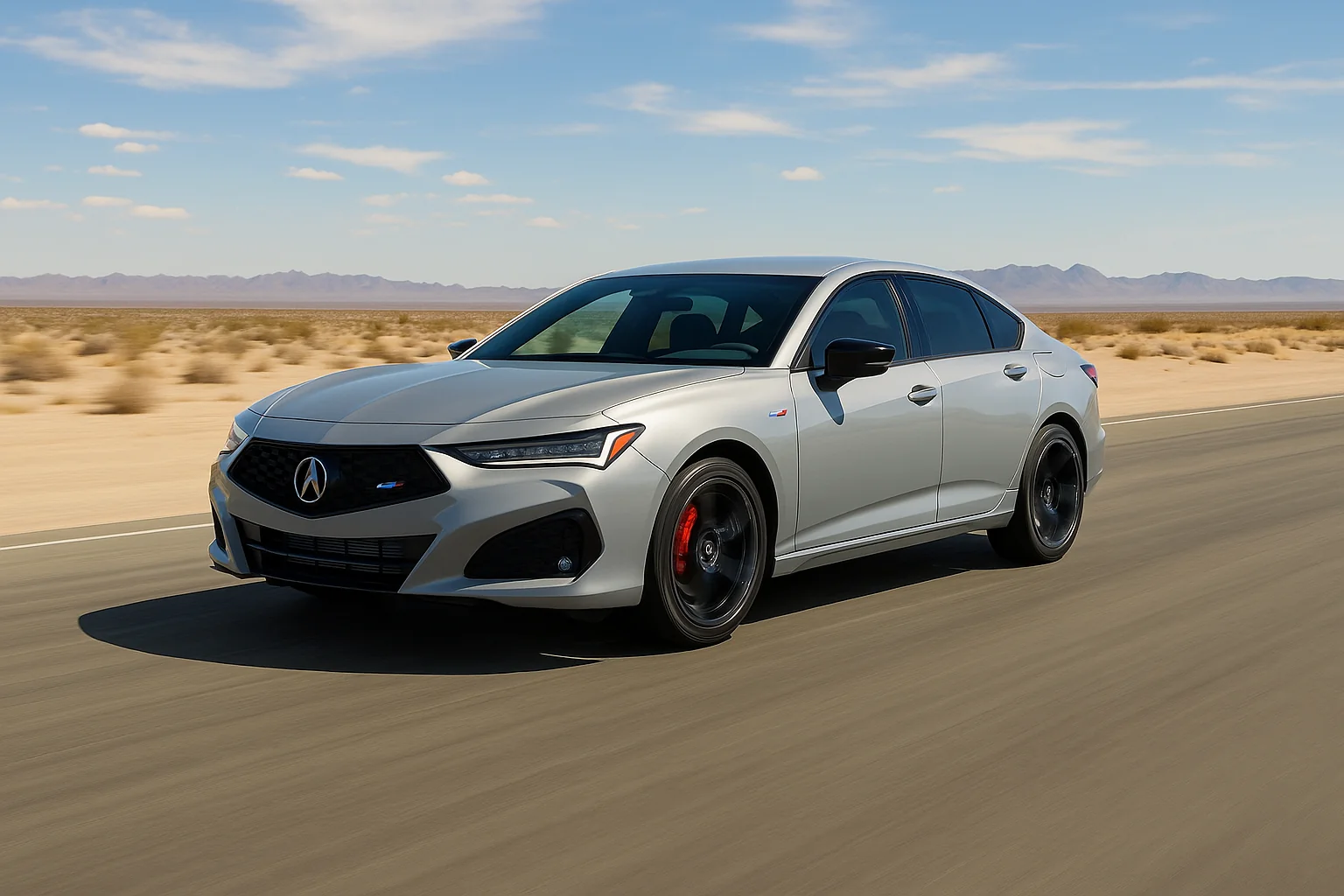
MSRP: $59,545
8.2 /10
Rating
Pros
- Engaging powertrain response
- Balanced driving dynamics
- High real-world value
Cons
- Outdated touchpad interface
- Limited rear practicality
- No manual option
2025 Acura TLX Type S review by Vyocar
A sharp blend of luxury and performance, the 2025 TLX Type S redefines everyday driving. From quiet confidence to road-gripping thrills, this Acura doesn’t just show up—it shows off.
Overview
I’ll be honest—my first experience with this 2025 model was mildly disappointing, like realizing the fancy coffee you just ordered tastes like slightly burnt water. The cabin looked clean and well-crafted, sure, but the touchpad interface felt like it was designed during the flip-phone generation—and left untouched since. And for a performance-oriented machine pushing a 355-hp turbocharged V-6, the early drive felt strangely muted. I expected something more spirited, less… sleepy. But then the SH-AWD system decided to show up. Once tuned, it brought everything alive—the steering sharpened, the brakes grabbed with authority, and that mild identity crisis had started to fade into something much more compelling.
Size-wise, it’s an in-between mid-sizer, larger than your compact Audi A4 or Mazda 6 Signature, but still leaner and more sporty than a BMW 5-series or Audi A6. The proportions—wide, low, with a slightly awkward liftback vibe—don’t follow the usual playbook, but you can’t call it boring. It’s a looker, especially in the right color and wheels. The rear seat space is acceptable—not limo luxury, but enough for grown adults to avoid passive-aggressively shifting every few miles. And those brakes? Fantastic. Wet weather, sharp turns, sketchy pavement—they’re always ready to play hero.
If you’re deep into comparisons, you’ll probably weigh it against the Lexus IS 350 F Sport, Toyota Camry TRD, or the predictable BMW 3-series—each with their own loyal cults. But this Acura doesn’t beg for validation. It leans into its Japanese roots while quietly taking notes from the Europeans. There’s value here—real, high-value at that—especially considering its price hovers under the dreaded $60,000 ceiling when optioned sensibly. The base four-cylinder 272-hp version? It’s fine if you’re just trying to say “I drive a TLX,” but the Type S is the only option if you want to feel anything at all.
And speaking of feelings—there’s a sort of underdog charm here. It doesn’t wear its brand history like a badge of honor, but the ghost of the Integra does lurk beneath the surface for those who know. Yes, there’s some portliness, and no, it’s not the quickest in its class, but it makes up for it with a balance of dynamics, power, and road manners that feel expertly judged. It’s the kind of review that flips halfway through—from “meh” to “why aren’t more people talking about this?” This car doesn’t dominate any one category, but across the domain of real-world driving, it might just be the best-handling sleeper in the segment. And if that doesn’t tempt you to at least test drive one, maybe stick to your front-wheel lease specials and let the rest of us enjoy it quietly.
What’s New for 2025
At first, it looks like another copy-paste from the 2024 model, but small tweaks make a big difference. The Diamond Pentagon Grille gets sharper and more functional, the front splitter, rear diffuser, and quad exhaust add attitude, and airflow improvements actually help at speed. New rain-sensing wipers and a wiper de-icer show someone thought about real weather. The gloss black spoiler adds style without shouting, and the whole look now aligns more with the Acura RDX. It’s not a redesign—but it’s enough of a refresh to feel like the Type S finally got the finish it deserved.
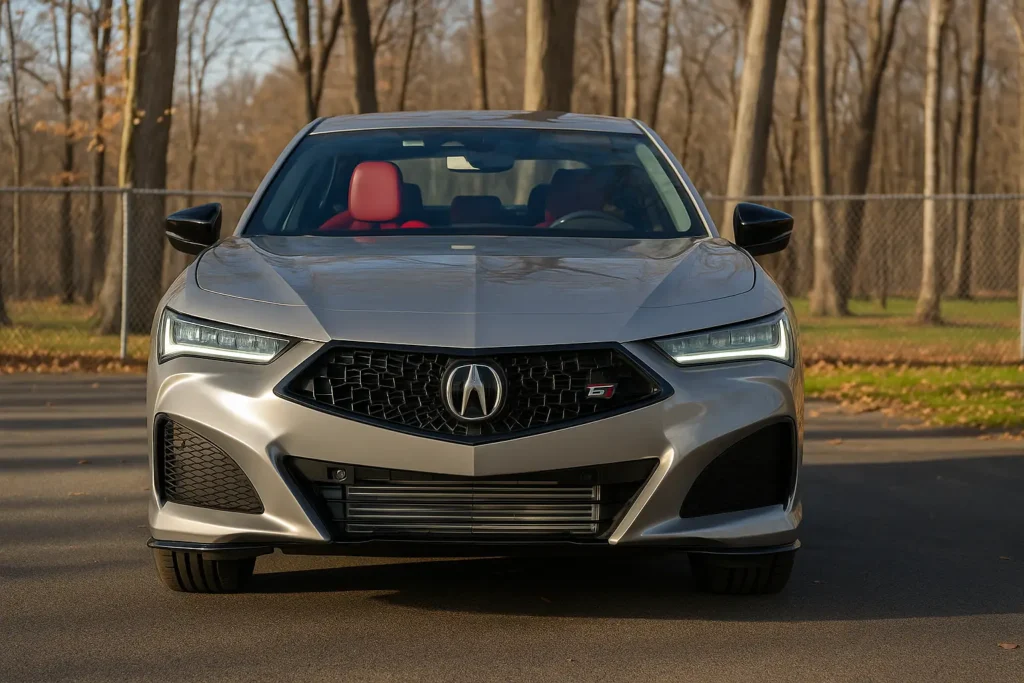
Pricing, Trim Levels, and Best Pick
At first, the price tag—$59,545—felt a little bold, like asking for full rent for a room with a shared bathroom. And compared to V8-powered bruisers like the Lexus IS 500 or even the cheeky Toyota Avalon TRD, it seemed this sedan might be missing a bit of that loud, hot rod character. But spend more than five minutes with it, and the value starts to settle in like a good second date. This isn’t some wild hooligan car—it’s more of a refinement-focused daily sports option with a surprisingly engaging user interface (yes, even with the touchpad still lurking). The Type S comes loaded with real convenience features and AWD, and while it’s priced close to rivals like the BMW M340i, Audi S4, and Mercedes-AMG CLA 35, it somehow feels better looking, less desperate to be noticed, and a lot more reasonable once you look at what you’re actually getting. A highly-optioned four-cylinder might cost less, sure, but it won’t have the charisma or tuning this brings. It doesn’t try to out-flex a V8, or act like a luxury Genesis GV70; instead, it quietly fills the entry priority for buyers who want a car with good manners, enough tougher edge to feel alive, and the kind of value that compares well with every rival in this segment. This is the example of everyday performance that the BMW M340i would’ve been if it had a little less ego.
Powertrain, Transmission, and Driving Dynamics
At first, the turbo lag caught me off guard. I hit the gas pedal, and for a second, it felt like the car was waiting for a corporate approval email before moving. Not ideal. But once the 355-horsepower V6 finally delivers, the car wakes up with a kind of exhilarating confidence—especially when sport mode is activating and the paddle shifters kick in. The 10-speed automatic transmission, mated to a solid torque converter, isn’t a snappy dual-clutch, but it’s surprisingly good at downshifting with a touch of auto rev-matching that makes you feel slightly more heroic than you are. It doesn’t have the manual-only purity of the old Acura Integra, but it finds its own thrilling, communicative rhythm, especially in cornering with the Super-Handling AWD doing its quiet magic.
There’s real precision here—the steering feels balanced and nicely weighty, with chassis bracing and a sport-tuned setup that allows the car to handle tight twists on both city streets and rural roads. The adaptive damper system filters out the harsh stuff without turning the ride too much, and even the brake calipers—those big, red Brembo ones—handle hard stops like they’re casually putting out small fires. No excessive understeer, just a calm, confidence-building composure that makes the car feel planted when you most need it. In comparison to something like a BMW or Lexus IS 500, this setup feels less dramatic but far more pleasing in real-world use.
Forget the lazy feel of a Volkswagen Arteon or the unpredictable sass of a Jaguar—this thing just engages. The engine itself? A turbocharged 3.0-liter that pumps out 354 lb.-ft. of torque with no fake noise piped in (bless). It may not replicate the old-school gleeful buzz of a Mazda3 Hatchback or the raw kick of a V8 Lexus IS 500, but it offers aspiration with less cost and more livability. It even adds a bit of spoiler drama just for the sports sedan crowd. The gear selector is still a centre dial, not my favorite, but at least it’s consistent. And while drive modes like Individual are nice to have, most will just leave it in sport mode and enjoy the zip. The brakes are fantastic, the ride feels firm without being punishing, and the freewheel effect is minimized enough that you can enjoy urban motion without feeling like you’re constantly recalibrating your own foot.
As for cog-swapping and the dream of a manual transmission, it’s gone—deal with it. But what’s left is a distinct, engaging, and surprisingly solid package that makes every turn feel appreciated, especially when driving with just the right amount of adrenaline and salt in your veins.
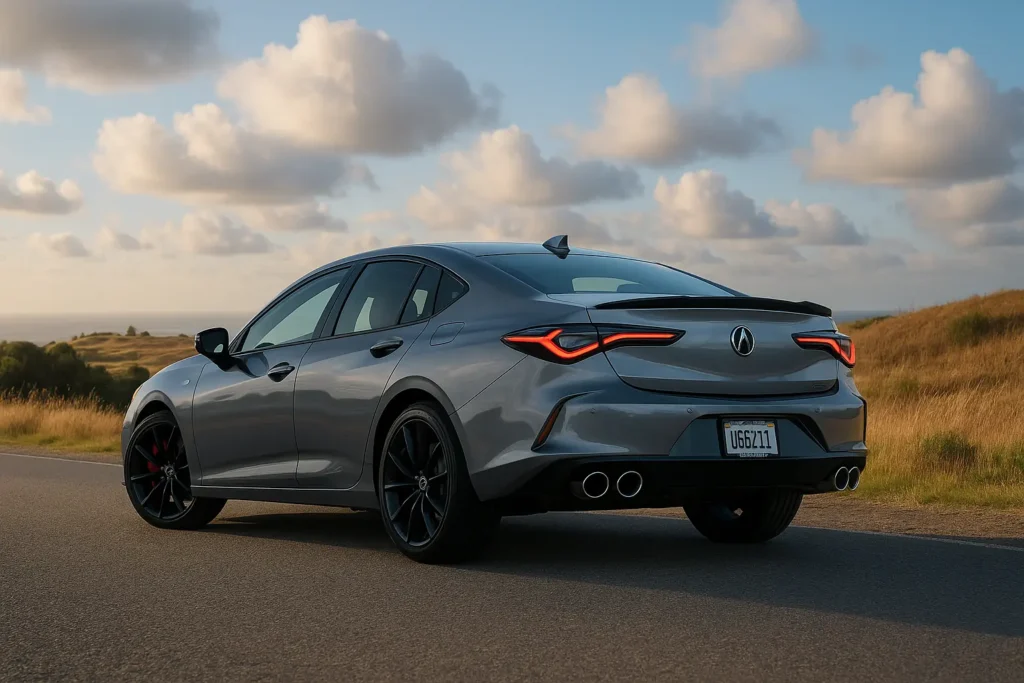
Fuel Efficiency and Real World Testing
I figured the EPA sheet was being a little too optimistic—you don’t pack a 355-hp V6, AWD, and a 10-speed auto transmission into a 4,200-pound sedan and expect Prius-like numbers. And in stop-and-go traffic through Pasadena, paired with full AC, it did dip into the 19 mpg range. But once I left the city and got on the I-15, set cruise to 72, and let the adaptive dampers and Comfort mode do their thing, the car felt planted, smooth, and surprisingly efficient. On a 215-mile loop from Julian through Cuyamaca, climbing twisty mountain roads, then coasting downhill, it averaged a calculated 24.2 mpg, running on 91-octane in 62°F climate.Real-world testing showed that keeping the rpm near 1,800 rpm in higher gears was key—otherwise the engine starts overworking, especially in Sport+.
During climbing, you’ll watch that fuel average drop quickly, but the dynamic setup, aerodynamics, and smart gear choices keep it from becoming a total pump drain. Compared to something like the Audi S4, which has slightly better specs on paper but feels heavier when climbing and less grounded on inclines, this TLX held its own. It’s not a hybrid, but it didn’t behave like a gas-guzzling story from the early 2000s either. In moderate conditions—78°F, two adults, light luggage, mostly highway with some city mix—the return trip delivered a consistent 25 mpg, which, frankly, exceeded my expected number and left me mildly impressed. Just don’t forget to breathe when watching the fuel gauge during uphill blasts.
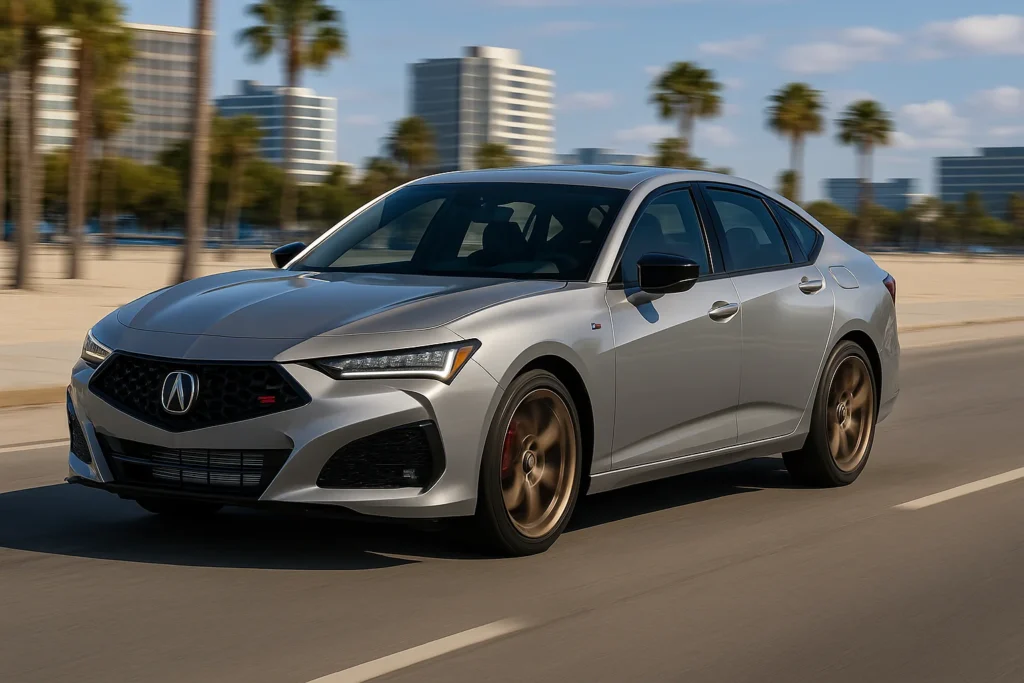
Interior and Comfort
When I first got in, I thought the trackpad controller and gear selector were part of a prank—maybe the gear knob got fired and no one told me. The center stack, shaped like a compact command center, overwhelmed with push buttons and a slightly overstyled main tech interface, made me long for the user-friendly simplicity of something like the Honda Odyssey. But then the ambient lighting kicked in—yes, with a customizable 27-theme system—and I noticed the brushed aluminum, real aluminum, and open-pore wood mix quietly flexing across the dashboard, console, and door panels. It’s clear someone paid attention to touch points, and the build quality does feel like it belongs in a proper distance tourer.
The front seats are more supportive than flashy, but with great bolstering, adjustable lumbar, a power thigh extension, and generous seat travel—which tall people like me appreciate after being punished by the Mazda CX-70. Materials are mostly high-quality: leather-trimmed, synthetic suede, and red upholstery in Orchid or Black schemes that add a vibrant touch without screaming for attention. The steering wheel is leather-wrapped, nicely weighted for everyday driving, and pairs well with the drive-mode selector that actually changes the ride feel—not just the graphics on the screen.
Rear space is decent—not plush, but the backseat has decent roominess, reclining options, and even a drop-down armrest with usable cupholders, which honestly shouldn’t be a luxury but often is. The 2nd row isn’t Lexus ES 350 F Sport-level, but it’s comfortable enough for extended periods, especially on rolling hills where the ride comfort and noise isolation come through. Features like seat heating, three-zone climate control, and solid HVAC controls with tactile control knobs are refreshing in an age where some vehicles bury them behind ten swipes and an auto setting that assumes you’re driving through the Sahara.
The power moonroof—a full single-panel sunroof—opens up what would otherwise feel closed in under the slightly aggressive tapered roof. Even with summer tires, the ride is composed, and though the transmission is tuned for sharper response, it never gets jumpy. Between the smart layout, structure, and elements borrowed or inspired by rivals like the BMW 3 Series or Genesis G70, there’s a nice balance of sporty elements and true livability. It’s not trying to be everything—it just nails the driving position, gets the audio system right, includes plenty of USB-C ports, and treats you like a grown-up who might want to feel a bit of joy while stuck in traffic.
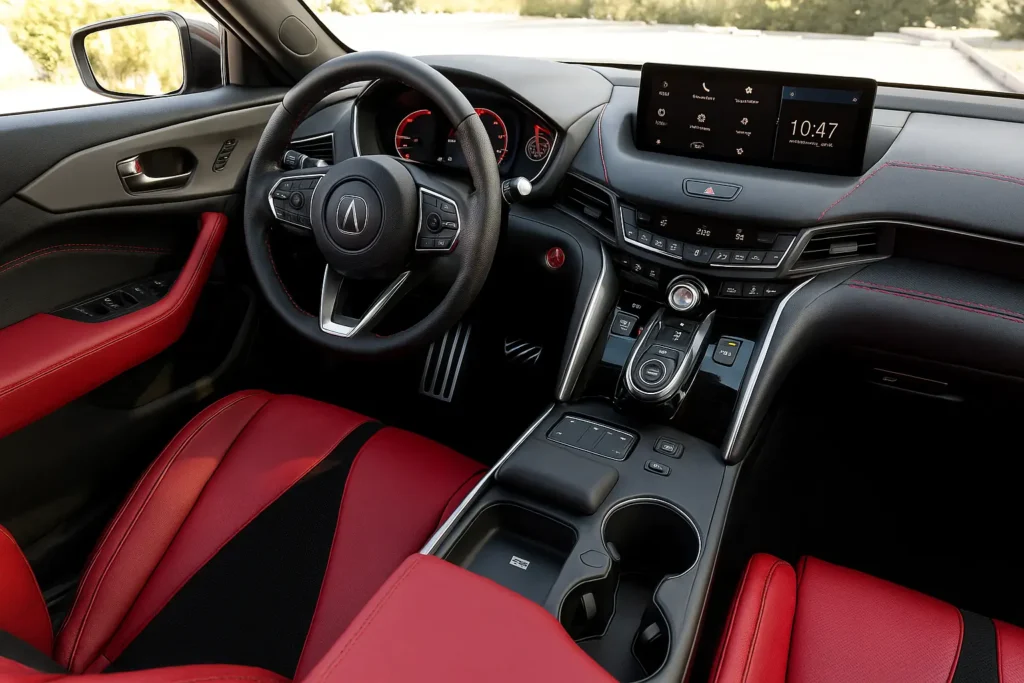
Cargo & Practicality
I wasn’t expecting much here—“practicality” in a Type S usually translates to “good luck.” The trunk is modestly sized at 13.5 cubic feet, and between the chassis bracing and short decklid, the actual loading experience feels more like an upper-body workout than a weekend errand. The height is fine, but the width (at 75.2″) and length (at 194.6″) of the car make parking this 4,221-pound sedan in tight spots feel like solving spatial puzzles for fun. That said, there’s a rear seat pass-through for longer items, and the wide opening helps reduce some of the pain.
Once inside, the deep side bins and Velcro-backed blocks—which I admit I thought were coasters at first—keep things from rolling around. There are lower anchors for car seats, though getting small children in without banging a knee may require some choreography. The front seat space is solid, but cabin storage is just okay—hidden compartments are limited, and anything too large has to store in the trunk.
Still, thanks to wide doors, access is decent, even if the strip of trim around the rear hinders how easy things load. It’s not cramped, but it’s definitely not what you’d call “roomy,” and yes, there are sacrifices—especially if you’re hoping this can moonlight as your larger family hauler. But unless you’re hauling blocks of granite or trying to move a couch, the limitations here feel insignificant for daily use.
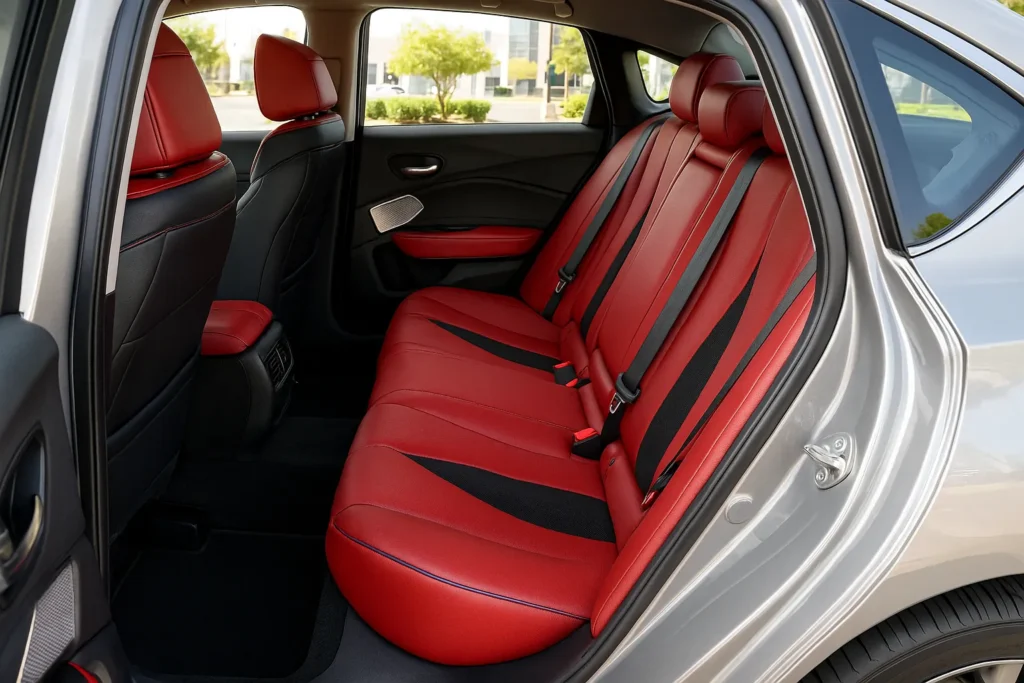
Tech & Connectivity
I’ll admit, my first user experience with the True Touchpad Interface felt like a cruel inside joke—an archaic operating system paired with a trackpad that made even iDrive seem intuitive. It was awkward, slow to react, and borderline appalling, especially when you’re trying to navigate menus using the oddly placed center stack while avoiding a lane drift. But then, after repeated use, it weirdly became second nature—kind of like figuring out how to shift-by-wire without looking like you’re launching a space shuttle. The 12.3-inch infotainment display finally redeems itself with sharp-looking maps, 3D Navigation, and crisp HD Radio, while Apple CarPlay and Android Auto offer decent smartphone integration—though it’s not always seamless, thanks to some cumbersome layering.
The ELS Studio 3D premium audio system—complete with 17-speaker surround sound—genuinely hits with clarity and punch, making the whole setup feel less like a tech travesty and more like a recovery arc. There’s wireless connectivity, Bluetooth, USB ports (though not enough for rear passengers with laptops), and wireless device charging for your phone, plus Wi-Fi hotspot and proximity keyless entry for convenience. It has voice recognition, voice controls, and even Amazon Alexa, though shouting “turn down the volume” while the sound quality obliterates your eardrums is still a bit of a riot.
The digital instrument cluster is clear, the lane guidance works well, and dynamic bits like the drive mode dial, steering-wheel buttons, and auto-dimming rearview mirror feel intuitive. The integrated navigation system is accurate, the universal garage door opener worked flawlessly with my crusty 2006 opener, and the moonroof controls are tucked into a nice overhead spot. This isn’t the tech leader in the segment—some bits feel like foreshadowing for a smarter future that never came—but with enough thoughtful throughput, physical controls, and an ergonomic design, the infotainment finally feels like it belongs in the 21st century, even if the route here was… complicated.
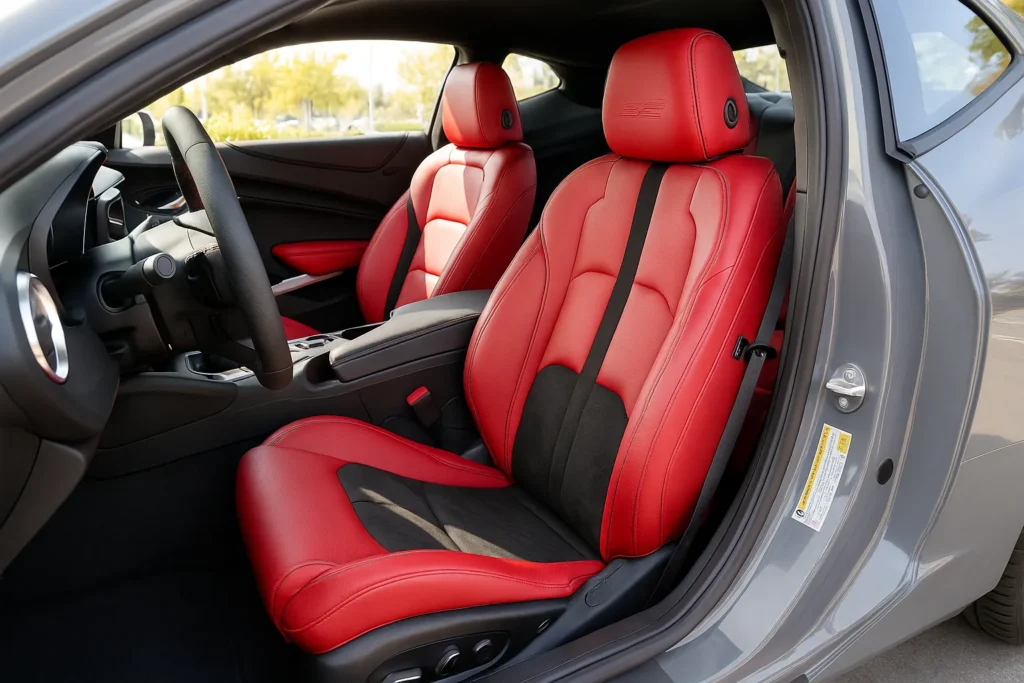
Safety
My first experience with the driver-assistance features felt more like a trust exercise than actual help—the cruise control sometimes loses speed on freeway hills, then abruptly brakes like it’s had a revelation about mortality. The lane-keeping assist can be a bit jarring, and the way it gently coasts before a descent sometimes feels more like indecision than control. But here’s the thing—it grows on you. The AcuraWatch suite is standard, and includes everything from forward-collision warning and automated emergency braking to blind-spot monitoring, traffic-sign recognition, and rear cross-traffic alert, all working behind the scenes with surprising quiet.
The driver-awareness monitor doesn’t nag, and once I adjusted the set velocity and stopped expecting a robotic chauffeur, the system actually felt… comfortable. The lane-departure warning is more of a nudge than a slap, and over time it felt less unsettling and more like a mildly concerned passenger. As for credibility, both IIHS (Insurance Institute for Highway Safety) and NHTSA (National Highway Traffic Safety Administration) give it solid crash test results, which means decades of luxury car paranoia may finally be resolved. It won’t drive for you, and it still panics if you overspeeds near construction zones, but for a tech-heavy sedan, it manages to keep the ride quality and support subtle enough not to ruin the drive.
Warranty and Maintenance Plan
At first glance, the limited warranty looks like a safe bet—four years or 50,000 miles, which sounds fine until you realize it’s exactly what everyone else in the market is doing. It doesn’t beat the Mercedes C-Class, and definitely not the Alfa Romeo Giulia, which dares to offer 70,000 miles of powertrain warranties as if it isn’t already a high-maintenance fling. That said, Acura gives you complimentary maintenance for two years or 24,000 miles, which most rivals skip like a forgotten handshake. It’s not flashy, but it helps during the early oil-change-and-regret phase. Of course, some brands stretch their warranties to six years to seem generous, but those often come tied to higher costs or less reliability. Here, the TLX keeps it modest—maybe too modest—but at least it doesn’t overpromise and underdeliver, which, in this segment, is already a small miracle.
Final Verdict
At first, I thought the Type S badge was just another attempt by car companies to stir excitement without delivering. The touchpad interface felt like it was coded by interns at tech companies, and in a market flooded with subcompact crossovers and super-sized screens, I questioned where this sports sedan even fit. But the more I drove it, the clearer it became—this thing is expertly designed, with a drivetrain sophistication that punches well above the $30K range from which many shoppers have graduated. It’s not trying to mimic German automakers; it’s carving out its own seat at the table in the luxury segment, especially priced under $60K. Between the Apex Blue Pearl paint, Orchid interior, and stellar driving feel, it’s a viable alternative for aficionados who want refinement, performance, and actual value without the constant challenge of higher prices and better technology promises. The ELS sound system is proof the tech department does some things right, and while the fundamentals may feel “difficult to master” at first, this is a well-balanced car that was engineered for people who actually enjoy being in the driver’s seat—and not just riding on fancy wheels waiting for the future to happen in the coming years.
More images of the 2025 Acura TLX Type S.
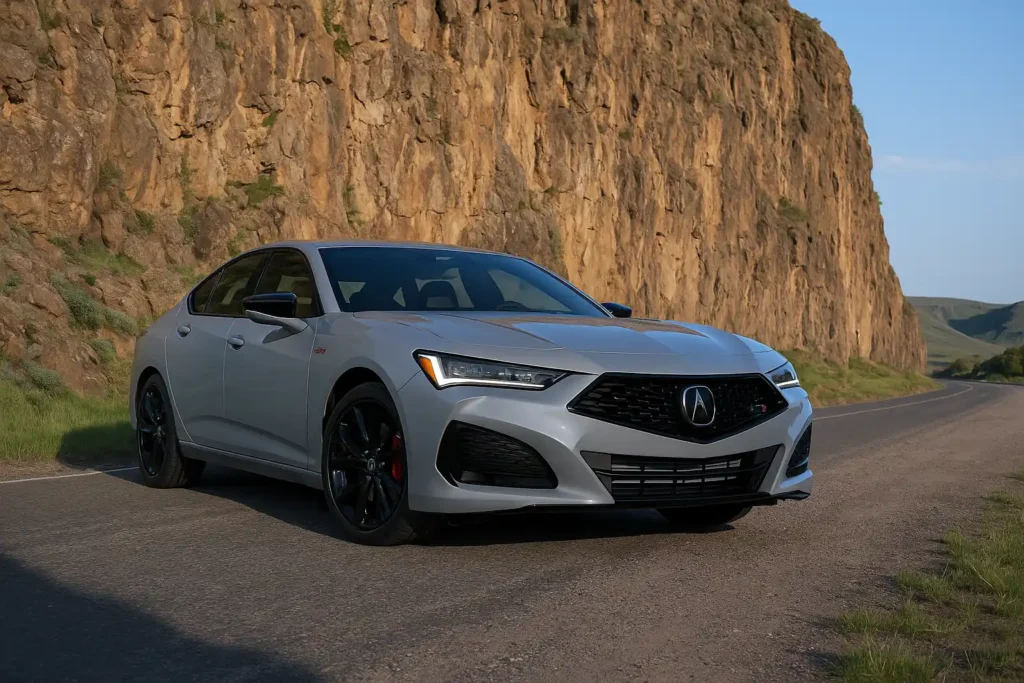
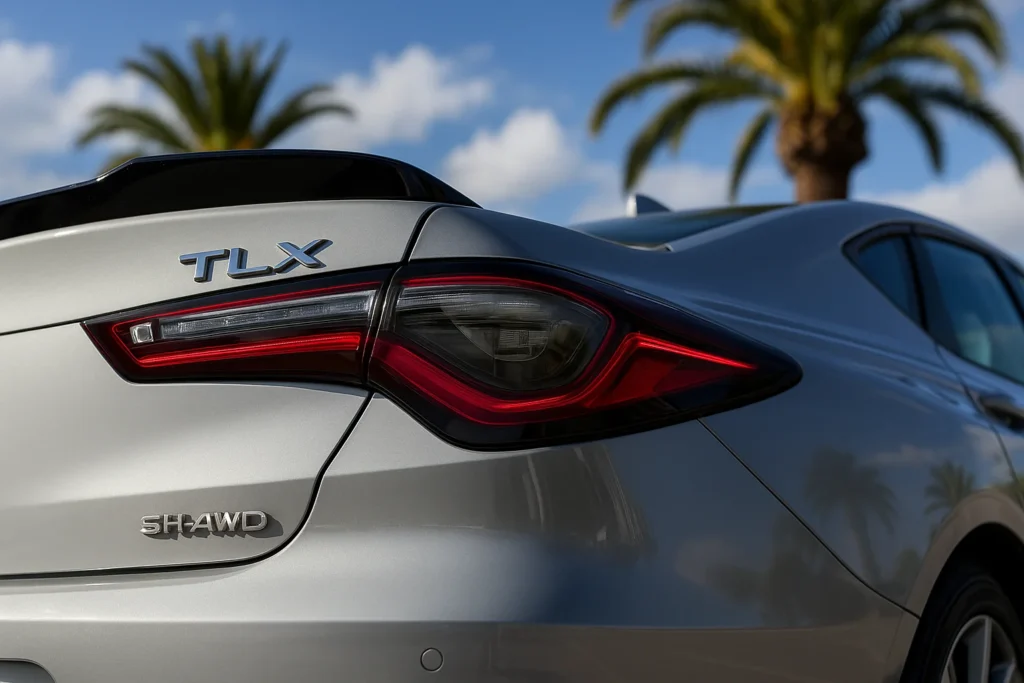
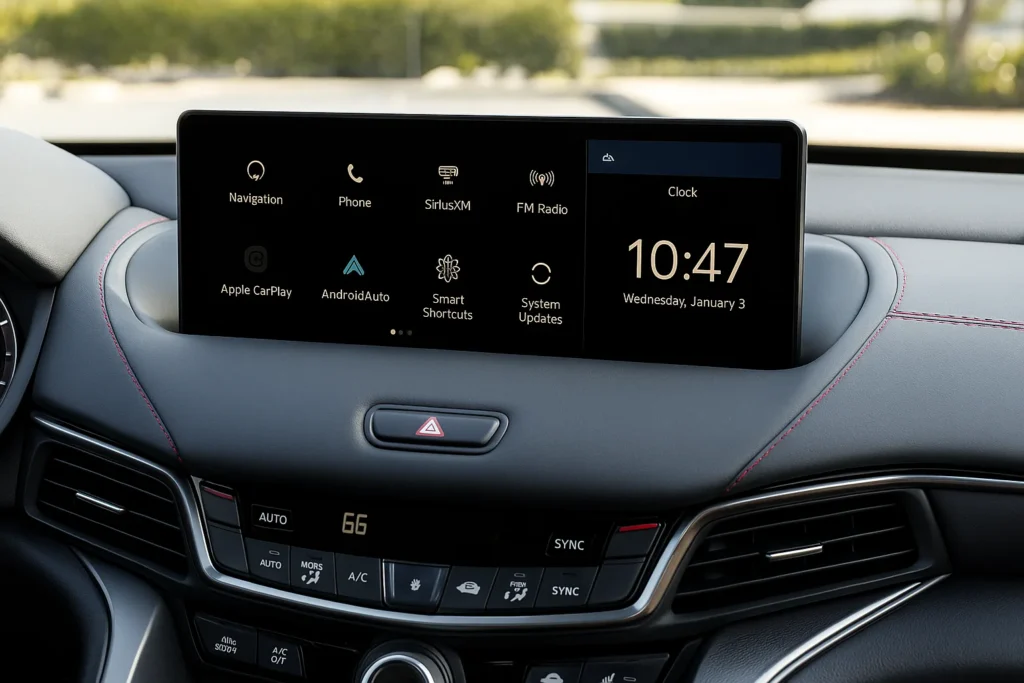
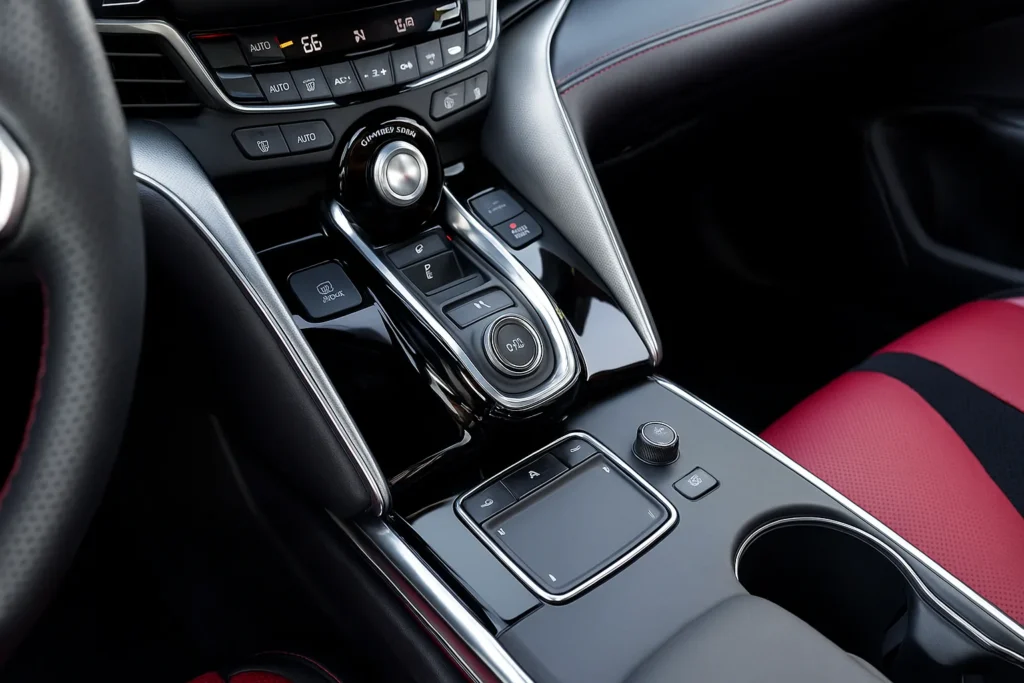
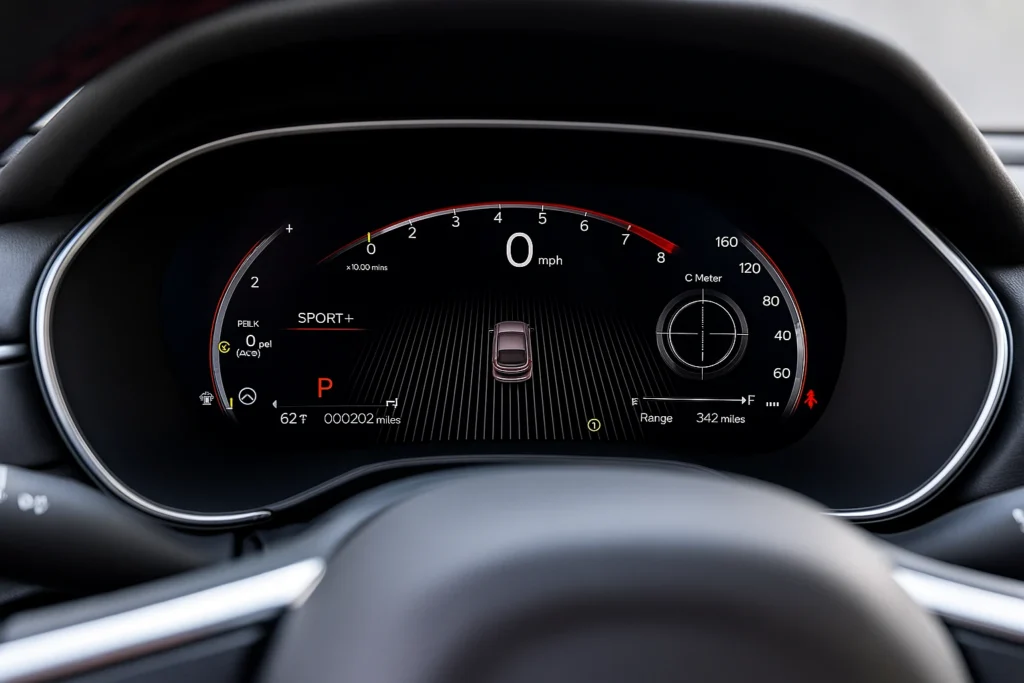
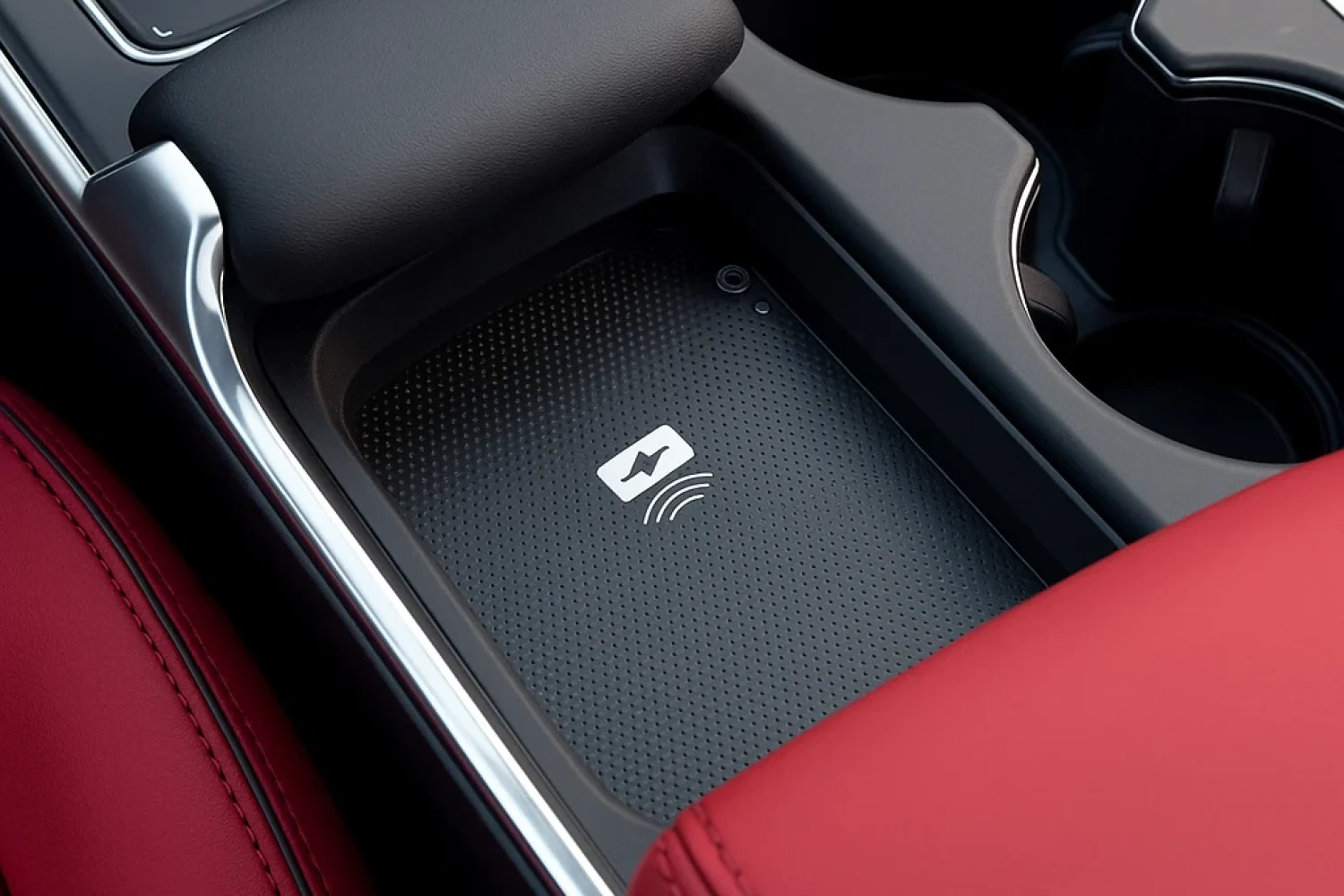


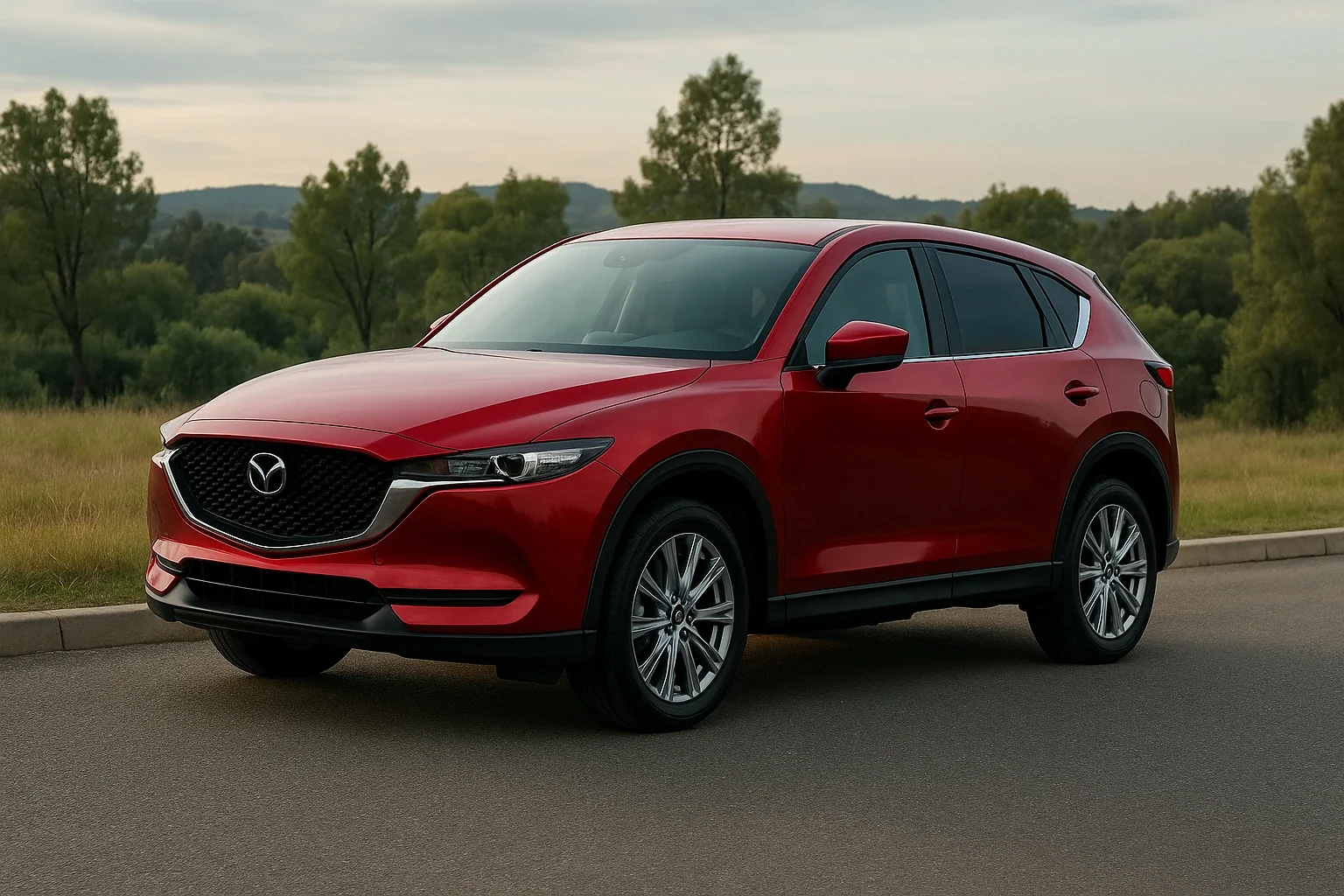
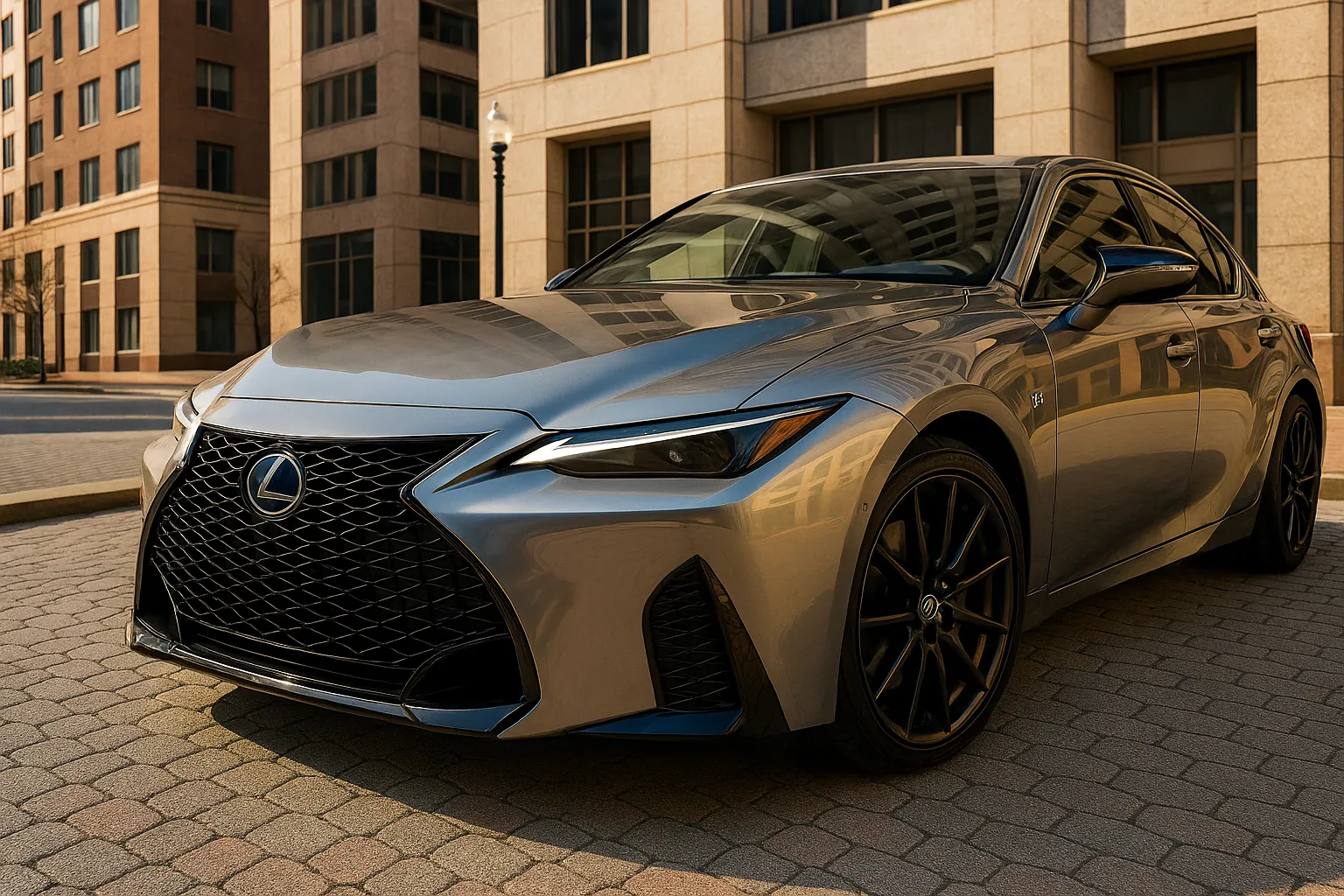

This Post Has One Comment
Pingback: 2023 Lexus RC 350 F Sport Review | Bold, Not Brutal